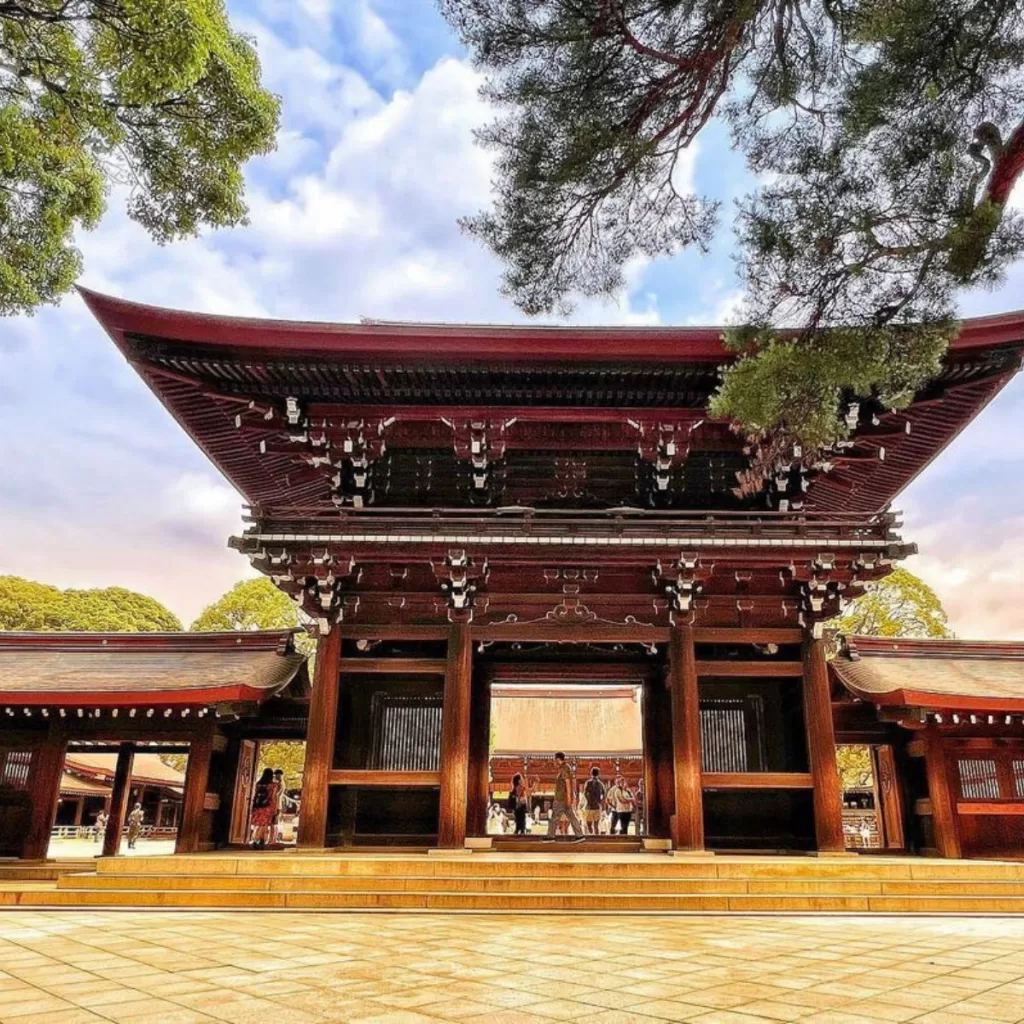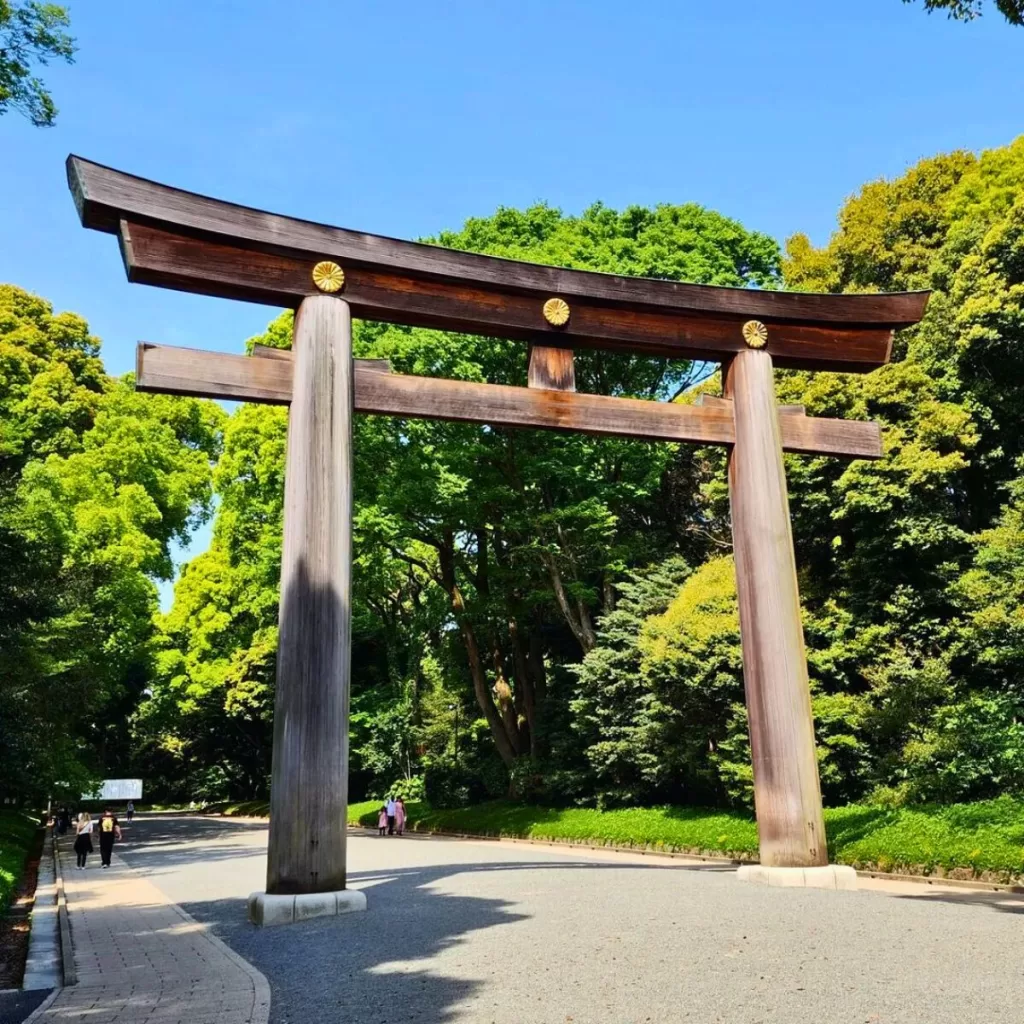Tokyo’s Meiji Jingu: Exploring the City’s Historic Shrine
History of Meiji Shrine
Nestled in the heart of Tokyo, the Meiji Shrine venerates the spirits of Emperor Meiji, the first emperor of modern Japan, and Empress Shoken. This tranquil Shinto sanctuary offers an oasis amid the city’s endless energy that ascended to power during the Meiji Restoration. His reign, known as the Meiji Period (1868-1912), saw significant changes in Japan as the country transitioned from an isolated feudal nation to a modern world power.
Emperor Meiji and Empress Shoken were instrumental in implementing Western-style reforms across Japan while preserving traditional Japanese customs. Their leadership during this transformative era deeply contributed to the formation of modern Japan. Even though they neither lived nor held any political roles at Meiji Jingu, it’s dedicated to their deified spirits following the Shinto belief in kami – spirits of nature or ancestors. Commemorating their contributions and legacy, the shrine was established on November 1, 1920.
The original shrine complex was destroyed during World War II but was rebuilt through a nationwide fundraiser and completed in 1958. Today, the shrine is visited by people across Japan and tourists worldwide who learn about the history of Emperor Meiji and his wife.

Architecture of Meiji Shrine
Meiji Jingu Shrine comprises two significant areas: the Naien and Gaien. The Naien involves the shrine grounds and includes the shrine’s main building, where Emperor Meiji and Empress Shoken are worshiped. The Naien also hosts the Meiji Jingu Museum, which showcases artifacts and personal belongings of the emperor and empress.
Gaien includes a collection of sports facilities, a picture gallery displaying murals related to Emperor Meiji’s life, and other buildings like Meiji Memorial Hall or ‘Meiji Kinenkan’ used for various sacred rituals and ceremonies over time.
Entering through one of its massive Torii gates leading to the main shrine building transports you into a tranquil haven in the middle of Tokyo’s bustling metropolis. These gates are made from Japanese cypress trees named Hinoki with copper plates for covering roofs donated from all over Japan.
A striking feature visitors observe while crossing a wooden footbridge leading towards Main Shrine buildings are several sake barrels wrapped in straw. Known as ‘kazaridaru,’ these symbolize respect for tradition and joyous celebration in the Shinto religion.

Special Features Of The Visit To Meiji Shrine
Visit to Meiji Shrine starts with passing under a towering Torii gate that marks the entrance to the sacred space. The shrine grounds are spread across 200 acres, forming an oasis home to approximately 120,000 trees of nearly 365 species donated from regions all over Japan.
Visitors can explore numerous aspects encompassing spiritualism intertwined with beauty here despite being very close to Shibuya, one of Tokyo’s busiest districts.
The path lined with verdant trees stands worlds apart from city chaos, leading visitors toward the heart of the shrine complex via two more Torii gates. Beyond this lies Main Hall or ‘Honden’ constructed in Nagarezukuri style, signifying magnanimity in simplicity via its unpainted wood facades that beautifully blend with serene surroundings.
Additionally, the inner garden or ‘Yoyogi Park’ manifests camellia trees blossoming since the pre-Edo Period alongside an iris garden adorning exquisite hues each June, attracting numerous admirers annually.
At the shrine’s main building, where worship happens, visitors may glimpse weddings, particularly over weekends, conducted traditionally, providing fascinating insights into the cultural richness this heartbeat location holds amidst Tokyo air.
Education about the craftsmanship behind several structures can be garnered at Treasure House Annex or ‘Homotsuden,’ exhibiting different traditional art forms demonstrating unique Japanese woodworking techniques that successfully survived World War II unscathed.
Accessing The Shrine
Harajuku Station on the JR Yamanote Line is convenient for accessing Meiji Jingu due to its proximity. A short walk brings you to the entranceway marked by a towering Torii gate, indicating a transition into a sanctified compound away from the city’s hustle and bustle. Shibuya or Sangubashi stations allow comfortable pathways toward impressive establishment via lush green forestry. The Tokyo Metro Line also caters to commutation toward destination effortlessly, creating a sturdy connective network citywide.
However, remember guides recommend bringing thoughtful gifts when visiting – flowers, fruits, and stationery items being common, making the trip interactive besides an educational and enriching overall experience, marking appreciation respects paid towards honorees enshrined, thereby furnishing closure toward the day at iconic spot steeped in ongoing historical, cultural significance globally emitting dedicated essence to open minds facilitating divine moments amidst rich foliage pristine territories right within bustling everyday urban landscapes.
Useful Information While Planning Your Visit To Meiji Jingu
The most significant thing travelers need to remember involving practicalities around shrine hours comes with stipulated timings; hence, planning requires adequately accommodating same within the schedule since the location opens daily by sunrise and closes after sunset, thus providing a long enough window for multiple agendas comfortably accommodated within accessible durations providing refreshingly peaceful pockets midst daily hurly-burly unceasing city traffic.